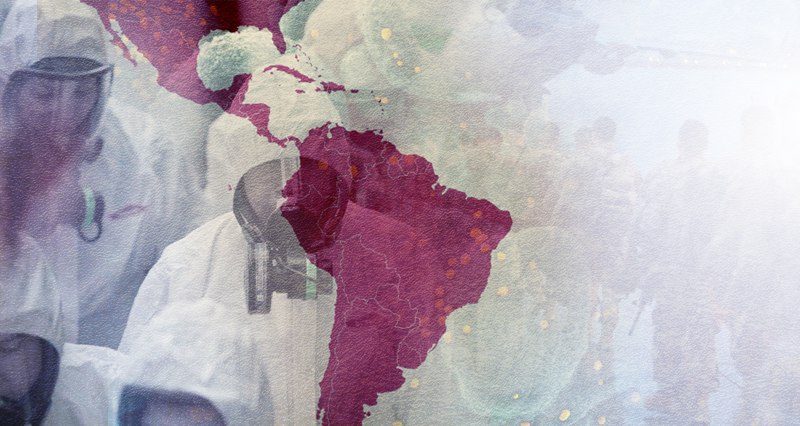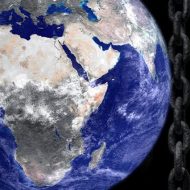The coronavirus crisis in Ibero-America has brought to light numerous problems across the entire continent. All models of governance and international disposition have suffered attacks to different degrees, revealing internal problems linked to the economy, health and the subsistence of citizens.
In all of Latin America the number of cases amounts to 200,000, with a total of 10,000 deaths (officially) accounted for in total until the end of April. We are also seeing a significant acceleration in the number of infections throughout the region. However, due to the variability in the ways of counting the infected and dead depending on the country, it is estimated that this figure could be higher.
Reaction to the pandemic
The first cases that were detected in the Ibero-American region were in Brazil, Mexico and Chile between February 26 and March 3, however, it would take a few days for the entire subcontinent to begin detecting cases.
The countries that were most affected in deaths, as expected, are the largest in population, as in the case of Brazil and Mexico. However, in relation to the number of inhabitants, countries such as Panama, Ecuador, the Dominican Republic and Peru were much more affected every thousand inhabitants.
Measures that were initially taken were things like the closure of borders, allowing countries to avoid receiving flights from hot areas such as Europe, the United States and China. Despite the closure, countries have allowed flights to repatriate their citizens who were stranded in other countries. Of course, this was used as a political campaign (as is the case in Argentina), when in fact it is something that most countries in the world have done. Other measures were to impose a quarantine. Some countries took this very seriously and acted with much more caution than other countries in Europe (such as the United Kingdom or Spain). However, despite having acted quickly in most cases, in many countries the spread of the virus reached record levels, increasing the contagion by up to 400% in a very short period of time. This is largely due to a lack of modern means of paying taxes and making online purchases.

Unlike Europe, Japan, Korea or the United States, in Latin America, countries are not as advanced in terms of online modalities, making people have to go out to buy food, pay their taxes, collect their money from ATMs, etc., thwarting any attempt at imposing a strict quarantine.
Another no less striking phenomenon that was revealed in the international press was the arrival of doctors from Cuba who were sometimes accused of not being doctors. The curious thing is that despite Cuba exporting doctors abroad, the thousands of Ibero-American tourists stranded in Cuba have not received help from Havana. The discomfort adds to the fact that many of them have received accusations of not being doctors, something always denied by the contracting authorities. Some countries have complained because not because there has not been a shortage of medical personnel, which is why they considered the “import” of doctors from another country unnecessary.
The cases of Chile and Ecuador
The case of Chile is of particular importance. Chile did not decree total confinement, but in mid-April proposed selective confinement that would be more flexible with children and sectors of society that are “less vulnerable”. As we well know, Chilean state healthcare is small compared to private healthcare, something very different from the rest of its neighboring countries, making the cost of hospital admission extremely high. Chile’s private medical practice covers 3 million patients with 47% of the total hours performed by the country’s medical personnel. In other words, there are 15 million people who have to be attended to in the remaining 53% of hours, meaning that there is greater attention and dedication in those who have a better economic status. However, Chile has shown great capacity to contain the epidemic, not so much in the aspect of contagion (the second largest in South America), but due to its low lethality. Of almost 3,800 officially confirmed infected, only 22 fatalities have been registered.
Ecuador has also been strongly affected, but in a very different way than Chile. Guayaquil has become one of the epicenters of coronavirus in Latin America. Since March, numerous videos showing bodies on the city streets began to circulate on the Internet due to the saturation of morgues and the State’s inability to move the bodies, where it was subsequently observed that the Army’s work to remove the number of bodies that they had not been able to absorb normally. A true situation of health emergency and international shame. Across Ecuador there are already more than 22,500 officially registered cases, but the number could be much higher because, naturally, tests have not been carried out on the entire population. Ecuador has a very high mortality in relation to the number of infected, registering more than 2,000 deaths per month, which reveals a precarious health system. And to make matters worse, it is already being said that the State has suffered a collapse in the statistical count of epidemiological surveillance and of the healthcare system in terms of counting the positive cases by Covid19. The increase in mortality might be a reflection of this. According to the civil registry of Guayaquil, there were 10,000 more deaths than in the same period of 2019.
Economic impact
In all of Latin America, despite not having, at least for the moment, the impact in the number of cases and deaths compared to other regions of the world (such as Europe, the United States or Asia), the disaster is likely to have a much greater impact. The economies of Ibero-American countries are mainly primary, that is, dedicated to products derived from nature with little or no industrial work. For this reason, these countries in themselves already have a low monetary flow and many citizens live “day by day” with what they sell. These states are not capable of facing such a slowdown in the economy which would result from keeping a large percentage of the population inactive during the quarantine. From some governments, such as the case of Argentina, a payment was issued to every citizen who is not a State worker. This aid apparently helped to solve the situation, but a few days later the government proceeded to devalue the Argentine currency, making workers even more precarious.
In general, all of Ibero-America is expected to have a cumulative loss of income of between 11% and 22% due to the health crisis. This indicates a very negative impact for the entire region. This can translate into a loss of between 6% and 12% of GDP, constituting a drop that far exceeds the world average. This may be a direct cause in the reduction of exports that these countries will suffer, particularly those in which their economy depends mainly on the export of raw materials, as happens in the case of Brazil, Peru and Chile as dependents of China and the United States.
In other words, it seems that the Latin American economies rarely fully recover from a crisis and when it seems that they finally will, another crisis arises that leads to more inflation and inequality.









Leave a Reply